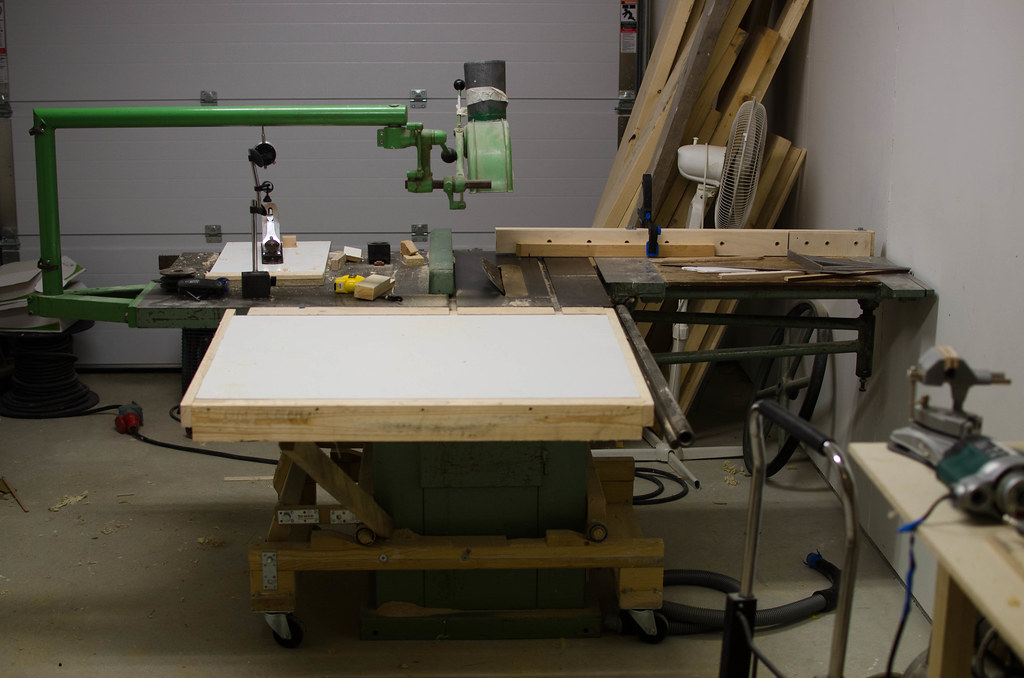The guarding mentioned as a preference by some members are for different saw benches.The ripsaw, Wadkin for instance,
https://www.google.co.uk/search?q=wadki ... rWYHn_o%3D
These have far heavier duty over guard mainly because the riving knife mounting wouldn't be man enough for the
potential kickback hazard.
As these saw benches were designed to cut and convert really thick timber, 6", 8", or 9" with a 5 or more HP motor
driving the blade, imagine a 9" railway sleeper coming back at you!
I've used these for years in the sawmill with an assistant at the back with a large mallet and wedge, waiting for my nod, or shake of the head as to weather I can hold it 6" past the riving knife while he whacks the wedge in to relieve the pinching, or I pull out of cut and start sawing again.
A band re saw would be too dangerous for this job as the feed would easily drive the blade off the wheels!
As width is not an issue on the ripsaw, the guarding is off to the right side as seen in the link above.
The running or dimension saw will usually only cut 3" and not so hazardous situations as above, are usual, the guarding on these is usually on the riving knife which is set just below the blade tip and can be left in place for non through cuts, as in housing joins, tenons, also cutterblocks, etc
This also caters for the larger 8x4, or10x5 sheet cuts as the guarding is on the riving knife.
The Felder and Altendorf models mentioned I think you'll find are guarded in that style simply because of the need for the removal of the very fine and worst dust hazard experienced by cutting man made boards, mdf etc,Again it's a multi use machine and has the benefit of a sliding bed
I know the pipe affixed to the guard is only about 30mm to suck the dust away but a 100mm extractor pipe would be rather a menace to fix and keep in place etc.
I personally can't see any advantage in a ceiling mounted saw guard in the usual workshop situation, Fixing in a strong and very sturdy way, ducking and dodging the thing hanging down whilst the saw bench is stowed away and also then trying to line up the guard and bench and the blade.
Still, What would I know, I'm just a fully trained professional!
Regards Rodders



































